by Dot Cannon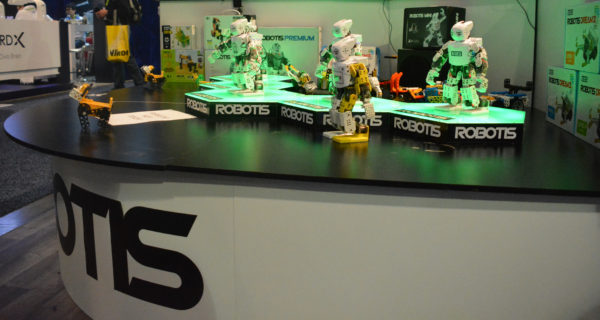
Cool robots are a given at CES®. But we just don’t see that many robotic dance teams. Especially in miniature!
During CES® 2019, in Las Vegas this January, Robotis America remedied that situation. The dance team, above, is a “Robotis mini” team.
And the “dancers” weren’t necessarily all “humanoids”!
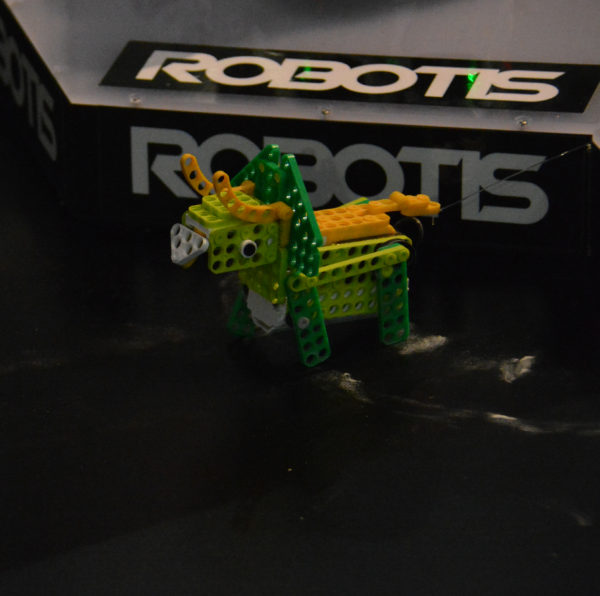
Robotis America’s Technical Specialist and STEAM Consultant Brandon Antillon explained what we were looking at, during our visit to the Robotics and AI hall.
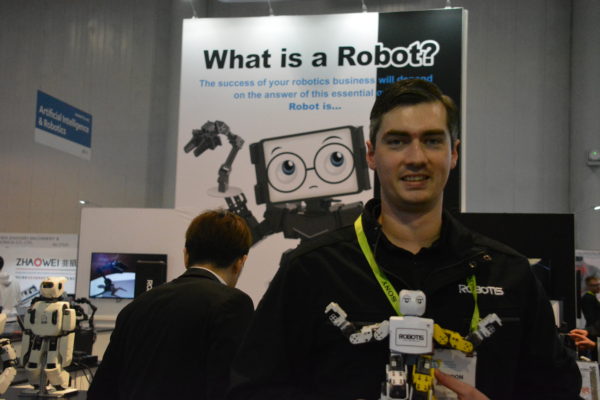
Brandon, we’re surrounded by some very cool robots…Tell me about them.
Brandon: Sure. I can give a brief explanation about the history of our company. We were founded in 1999. The founders were competition teammates in robotics, and they reached a point of humanoid software competition where, to reach the next level, they needed better parts.
And so they created the company to fund and create those parts they needed. That eventually snowballed into a corporate effort, of creating a wide variety of products used by roboticists around the world. And at that point they made a dynamic, smart-action leader system, which is our bread and butter.
We also have a separate (product), K through 12 STEM educational robotics kits. We call that “edutainment.” It’s now incorporating STEAM, so there’s 3D printing, there’s curriculum-based (projects) included in our kits.
Everything you see here today is a reference platform. We are, believe it or not, inside most of the robots you see in animatronics, Hollywood special effects, aerospace. We just haven’t been marketed as aggressively as we could have been, (but our system is widely used).
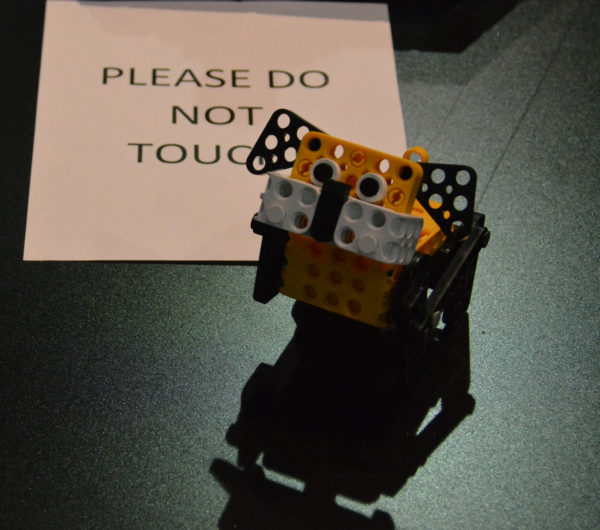
You have, over here, something I found a lot of fun. Dancing robots. And not just humanoids…a dancing dog?
Brandon: Yes. We have dogs, robots, dinosaurs…and the dancing robots were actually 3D printed. So you can buy it as a kit from us. But you can also get the 3D printer and (save yourself money), and piece it together using components from our catalog.
Any teachers or robotics enthusiasts (hearing that) are going to say, “Where do I find this, and is it currently available?”
Brandon: It is currently available. You can look at the major online retailers. I won’t name them,…because (there are) too many, but you can also go to robotis.us to find out more, and visit our electronic catalog.
What’s been one of your best experiences, so far, promoting all these cool robots at CES® 2019?
Brandon: Seeing all the cool tech and talking to people who are (innovators) and big VIPs in the industry. It’s also getting to meet people who may not have known we existed, and to just see their eyes light up and see that they have tons of ideas already on how they’re going to build their next project, using our technology.
(We have a lot of (parents, educators and robotics enthusiasts) listening to our podcast. What would you suggest, as the next project that they might like to do?)
Brandon: Our main business is the sale of the actuators and the hardware. Software is open source, so you can visit the Robotis GitHub. You can also go online and there (are multiple makers) that have published libraries, for multiple users in our robot source community. (They’ve) published their code and shared their experiences on what they’ve done, on the hardware side as well as on the software side. New projects, or just how to integrate sensors, or whatnot.
Being in research and development, what’s one of the most fun things that you’ve gotten to do, (working for Robotis)?
Brandon: Oh, man. One of the most fun things, besides working on the mini-dancing team?
Probably working with some of the automotive companies. I’ve worked in many different industries, so it’s kind of cool now, coming full circle, working at a robotics company and seeing how much of the industry is looking towards automation, to enhance human lives and enhance how we work in the workplace.
And so here we go. We have…our social robot, now serving drinks to people around our exhibition booth.
But being able to work across those different industries, and now approaching it from a different trajectory, from robotics.
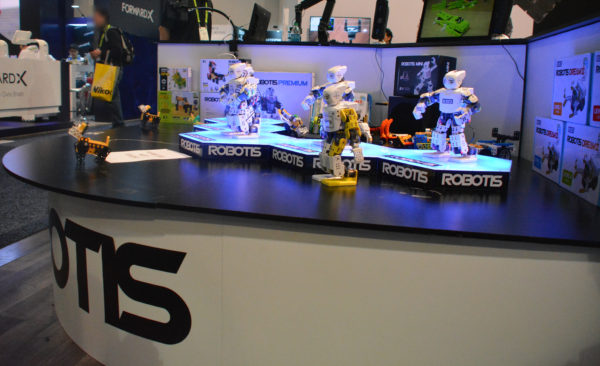
(What was that like to work on the mini-robot dancing team?)
Brandon: That’s probably the most fun. Because everybody thinks, when they see that dance routine, how cool it is, how athletic it is. They think, “Oh, man, it must have taken forever,” but we actually have a free piece of software that you can download from our website, that allows you to, just like you would do stop-motion animation. It allows you to set a pose and then set a time slider, so the whole dance routine is actually just a series of poses, played one after another.
(Where do we find this piece of software on your website?)
Brandon: So that’s called RoboPlus motion, 2.0.
(And your website?)
Brandon: Robotis, dot U-S. So it’s like “robotics” without the “c”. The name of our company is an answer to the question, “What is a robot?” A “robot is”…
We also have a YouTube channel, where we have tutorials. We also have videos of some showcases that might inspire you on what your next robot project can be. We have users all around the world. We have created projects based on our dynamics and servo actuators, or our robot kits like the Robotis mini. And another showcase, of what’s possible with robotics supplies and services.
(With users from all around the world, what’s one of the coolest projects any of them have come up with?)
Brandon: I’ve got this video playing behind me back here, probably the two coolest things are, there’s an FDA-approved medical device that helps people who have limited upper-body mobility,..and the other one is, we worked with an aerospace contractor, and we have the upper body of one of the humanoid robots, in the event of a disaster,…the robot’s upper body (becomes a drone and can fly).
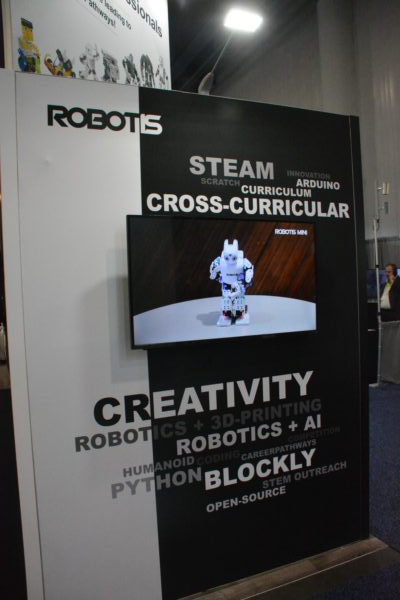
(How are you seeing the robotics field changing? What do you think we might see coming along in 2029?)
Brandon: What everybody’s worried about, in the industry, is, what is the future of automation? And here at Robotis, our idea of the future of automation is to enhance lives. We’re not interested in replacing the workforce, we’re interested in enhancing the workforce. So even our manipulators are designed to be a “third hand” for somebody who’s doing manufacturing, so that you aren’t getting repetitive stress injuries.
So our hope and our dream for the future, is to see robots improve human lives, so robots are side-by-side with humans.
(Tell me a little about the jobs you foresee emerging, that involve robots.)
Brandon: Sure. So the manufacturing jobs currently being done in an environment where there’s a lot of safety issues, a lot of fatigue injuries, or it just requires a lot of dexterity. And robots can do that very easily. In fact,…taking advantage of the precision-to-work servo, it’s very easy to do very precise work that used to only be able to be done by hand.
And so now that automation has come into play, the human can be a manager of the robot, rather than expending and fatiguing themselves trying to make the actual end product.
Of course, I had to find out what (a) “servo” was. If I understand correctly, “servo” is the robot motor.
Brandon: Yep. So everybody’s heard of motors, of CEC motors. They use them all the time. So a servo is a motor that has some sort of intelligence about vision, speed or force. And so our dynamics of smart actuators can actually keep track of (motion).
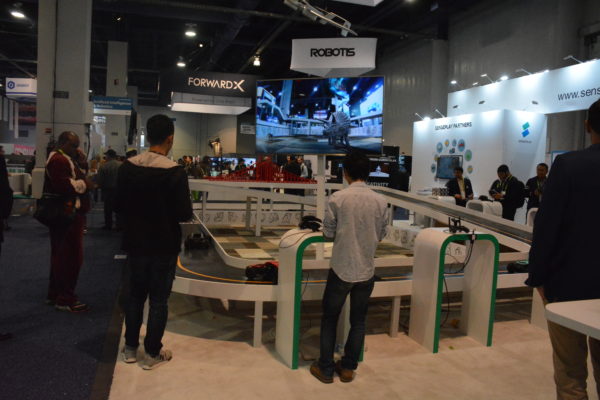
If people could only get one thing from you as a roboticist and developer about innovation, creativity and making a difference, at the intersection of art and science, what would you want them to take away?
Brandon: What I would say is, there’s no right or wrong way to get into robotics. We have artists, we have nurses, we have people with business backgrounds, fine art degrees, engineering degrees. But there is no wrong way to get into robotics. And whatever you are doing to get into robotics, automation, whether starting small with Arduino projects or starting at the higher level in something like automation, now is the time. Start wherever you’re comfortable.
